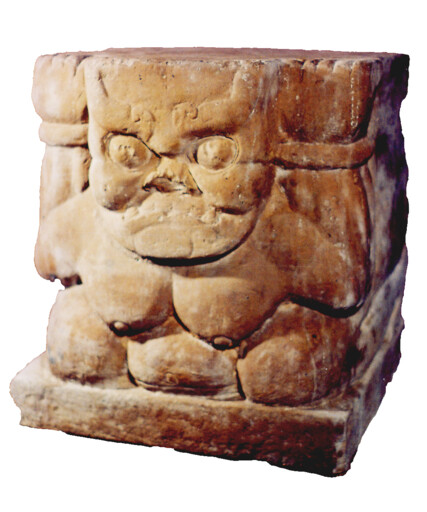


Echoes of Chinese civilization: Legacy of Xixia Imperial Tombs

The Xixia Imperial Tombs Photo: NINGXIA INSTITUTE OF CULTURAL RELICS AND ARCHAEOLOGY

A stone carving unearthed from the Xixia Imperial Tombs Photo: NINGXIA INSTITUTE OF CULTURAL RELICS AND ARCHAEOLOGY
As the largest, highest-ranking, best-preserved, and most representative tangible cultural heritage site of the Xixia Dynasty, the Xixia Imperial Tombs offer a direct reflection of the political, economic, cultural, and social life of the period. They vividly illustrate the interactions, exchanges, and integration among diverse ethnic cultures of the Central Plains and frontier regions, as well as between Chinese and Western civilizations—especially those along the Silk Road.
Fruitful discoveries
Archaeological research on the Xixia tombs began in 1972 and has involved seven major excavations. By 2024, 18 monographs detailing surveys, excavations, and studies of the tombs had been published, along with over 140 academic papers. These efforts have yielded a clear understanding of the site’s zone divisions, layouts, types of satellite tombs, burial structures, and associated artifacts.
The Xixia Imperial Tombs pioneered the practice of aligning structures along a central axis and introduced multi-courtyard layouts within the mausoleum complexes. The institutional systems, architectural layout, and unearthed artifacts reveal the historical processes of exchange, integration, and development among ethnic groups in Northwest China. Architecturally, the tombs embody a transitional stage in the evolution of Chinese mausoleum design. Their unique features—such as solid, multi-tiered, terraced tomb platforms with dense eaves—blend traditional Chinese funerary culture with influences from surrounding ethnic groups, Buddhist practices, and cultures such as the Tubo and Uighur. As such, they represent a rare example of large-scale rammed-earth imperial tombs in the history of world burial architecture.
Unity in diversity
Xixia culture represents a frontier form of Chinese civilization. Based primarily on Tang and Song cultural traditions, it also absorbed and integrated the traditions of neighboring ethnic groups, reflecting the distinct expression of Chinese culture in frontier areas. The Xixia regime brought an end to the prolonged era of division and warfare in the Hexi Corridor that had persisted since the Tang and Five Dynasties period. It unified the Hexi region and the Helan Mountains and acted as a cultural bridge connecting the Qinghai-Xizang Plateau, steppe cultures, and the Central Plains. The tombs’ distinctive fusion of diverse cultural elements stands as testimony to this historical process.
The Xixia language is one of only four known languages capable of contributing to the reconstruction of the Sino-Tibetan language family. It is also one of thirteen ethnic languages containing key information about historical ethnic interactions and integration. As such, it offers a rare and irreplaceable resource for linguistic studies on cultural exchange. Furthermore, the translation and interpretation of Xixia texts help recover lost Han Chinese documents, carry forward cultural traditions, and fill in gaps in the historical record left by the disappearance of certain source materials.
Protection of the tombs
Among all World Cultural Heritage sites globally, only two are tomb-related: the Mausoleum of the First Qin Emperor, or Qinshihuang Mausoleum (3rd century BCE), and the Imperial Tombs of the Ming and Qing Dynasties (14th–19th centuries). The Xixia tombs fall in between and uniquely bear witness to the now-vanished Xixia civilization. They also serve as physical evidence of the interactions, exchanges, and integration among various ethnic groups in the arid and semi-arid farming-pastoral ecotone of Northwest China. In light of this, we propose continued efforts to improve legal protections, planning, and financial and material support for the Xixia tombs.
These efforts are two-fold: First, surface-level protection should be reinforced while leveraging infrared and multi-frequency pulse technologies to carry out 3D scans of both above- and below-ground structures. The resulting data can be used to build comprehensive digital archives and create holographic 3D models of the tombs and their associated artifacts. Second, it is essential to deepen scholarly research and enhance public engagement in order to “bring the Xixia tombs to life.” Despite their historical significance—comparable to the Mogao Caves at Dunhuang—the tombs remain insufficiently studied and largely absent from public consciousness. To date, among the nine known imperial mausoleums and 271 satellite tombs, only Tomb No. 7 has been conclusively identified as that of Emperor Renzong (1124–1193), while the identities of the remaining occupants remain a mystery.
For this reason, and under the guiding principle of preservation first, the site’s successful inscription as a World Heritage Site should be viewed as an opportunity to coordinate immediate protection with long-term sustainable use. Greater efforts are needed to further explore the cultural significance of the Xixia Imperial Tombs, advance systematic conservation and scholarly interpretation, and make the tombs a vital platform for fostering a shared cultural identity for the Chinese nation at this new historical starting point.
Zhang Yuhai is a research fellow from the Institute of History at Ningxia Academy of Social Sciences. Zhang Mingpeng is a professor of editorship from the Library and Information Center at Ningxia Academy of Social Sciences.
Editor:Yu Hui
Copyright©2023 CSSN All Rights Reserved